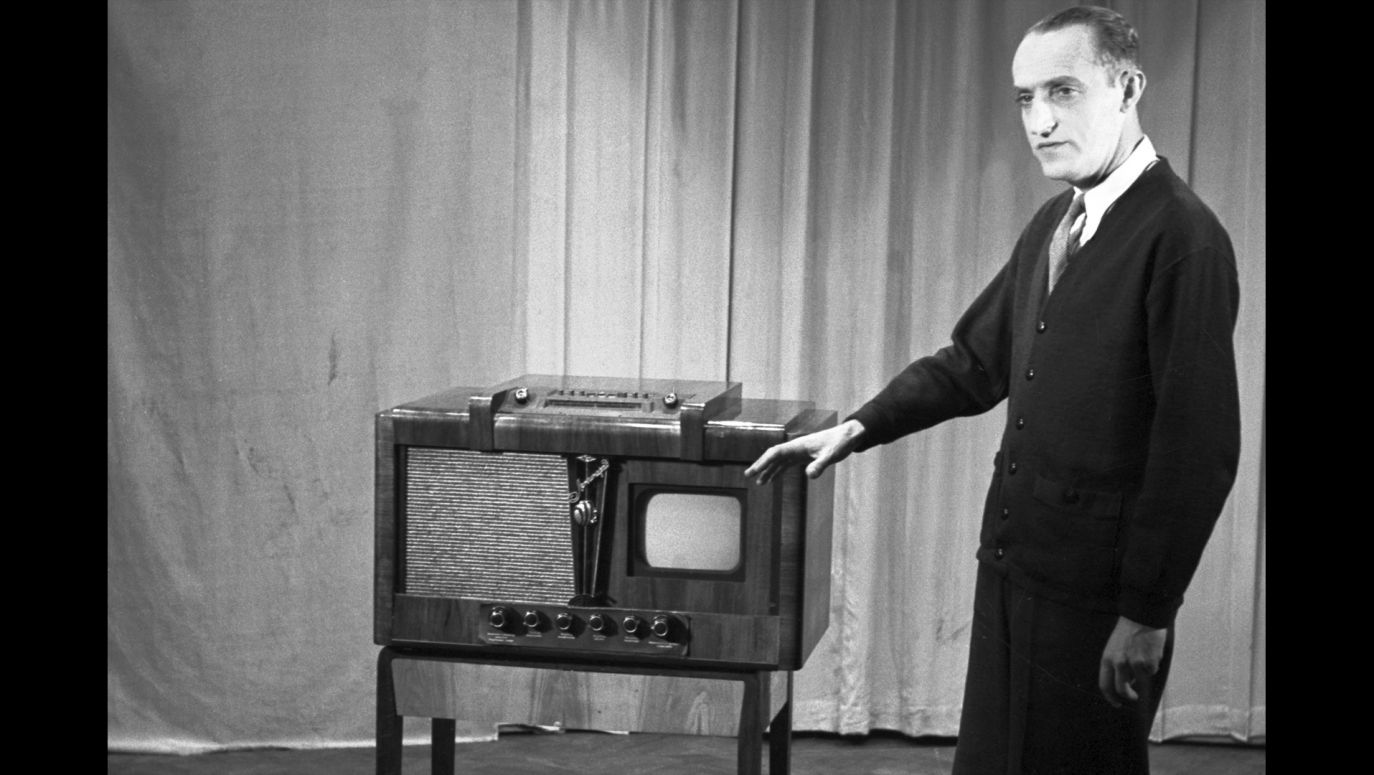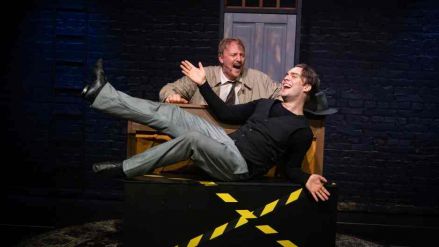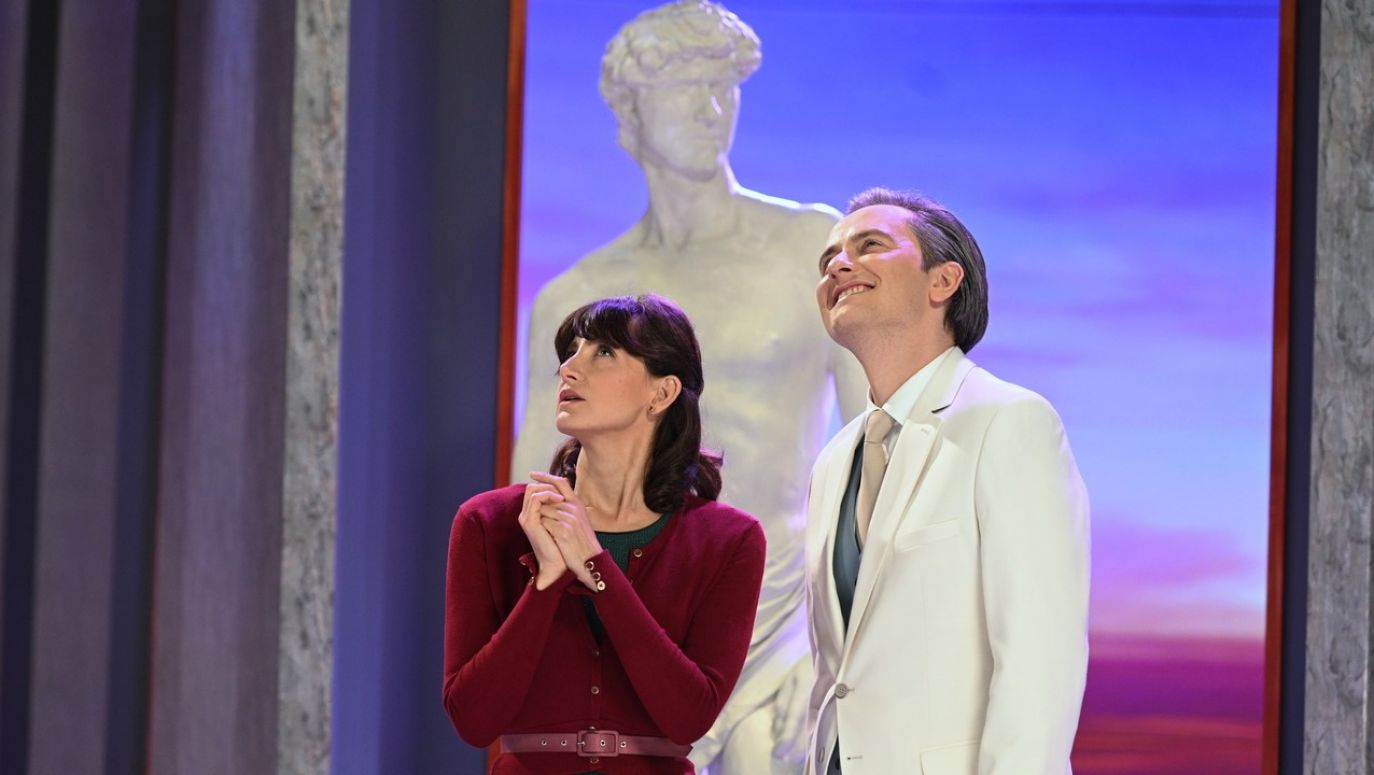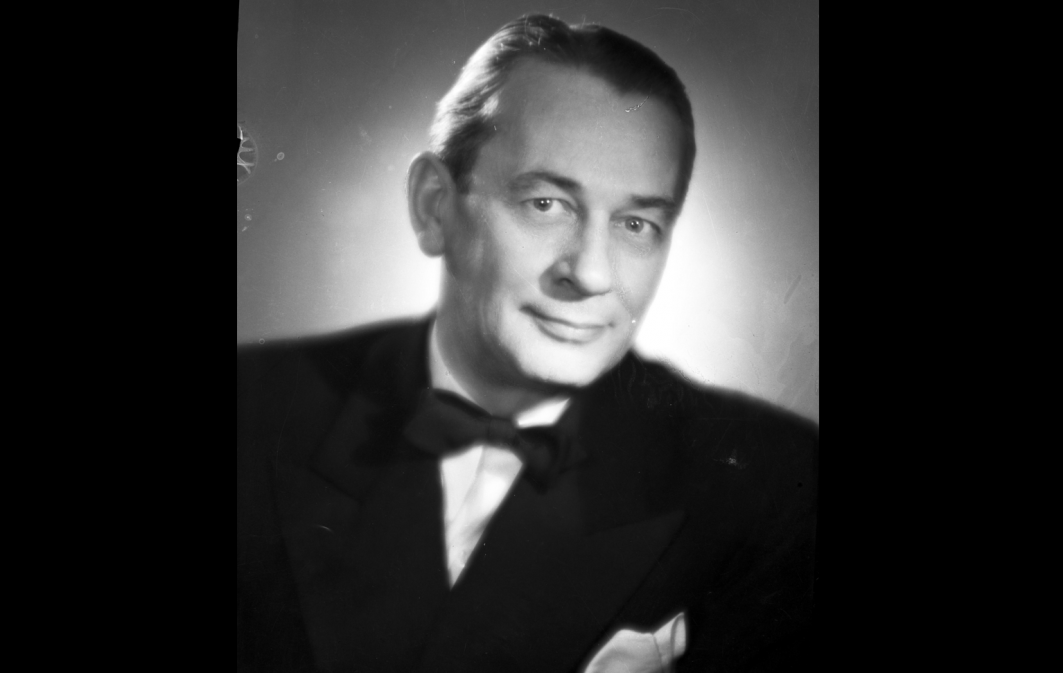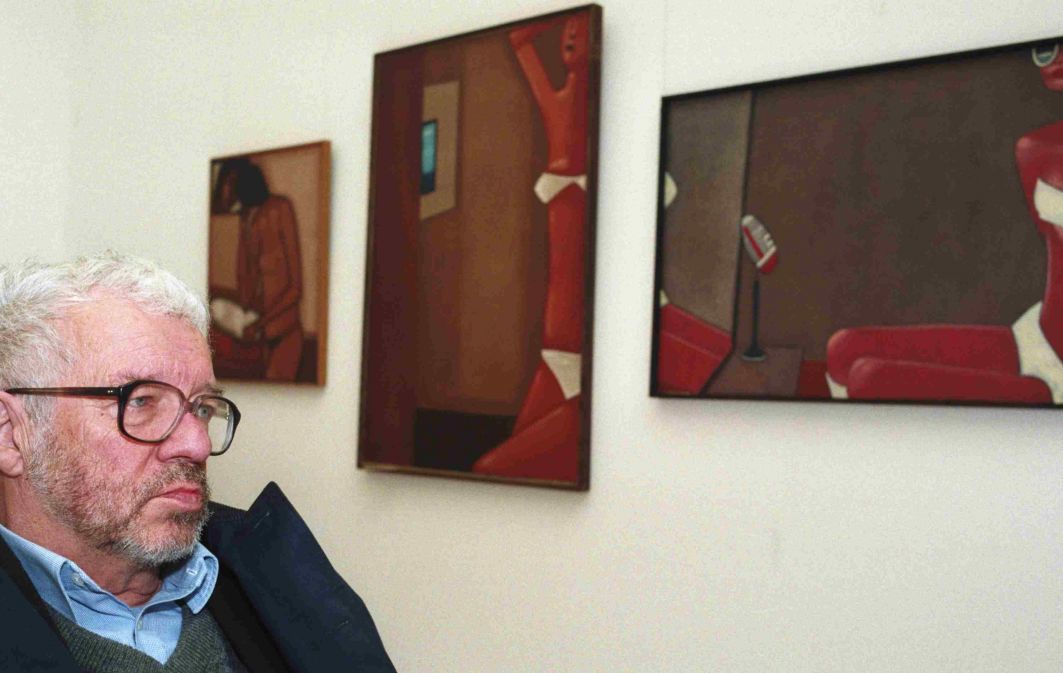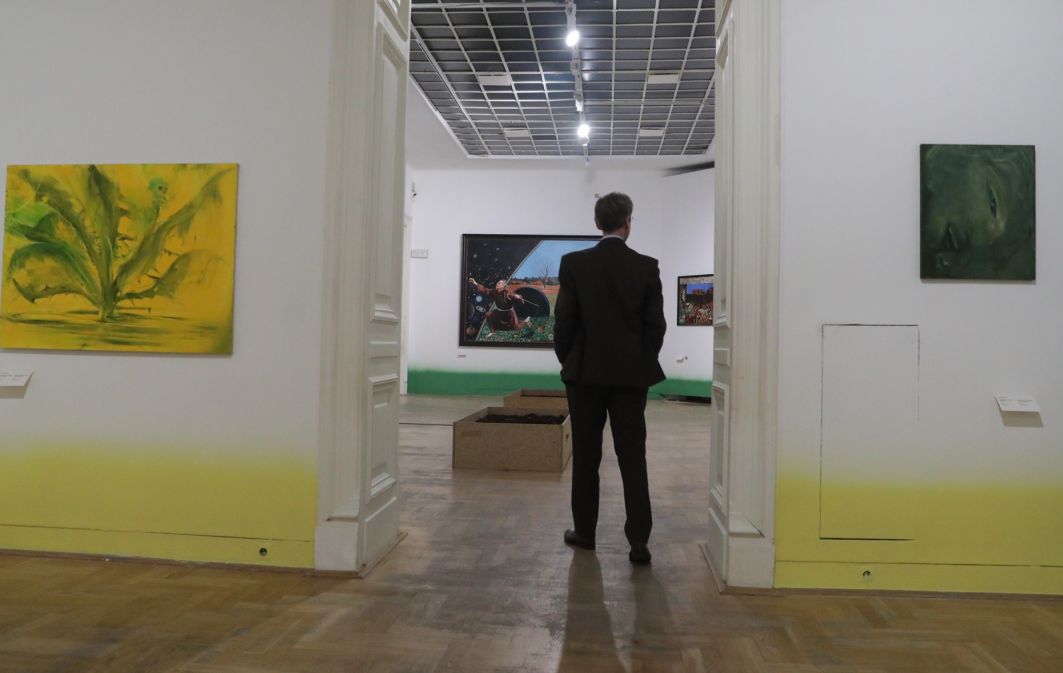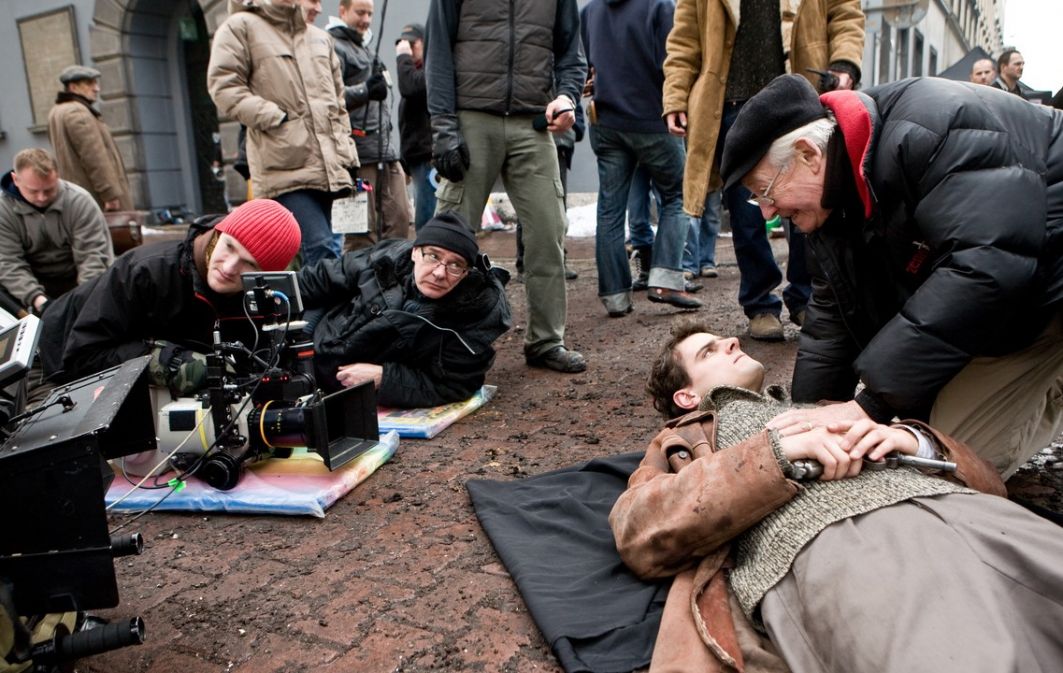What longings does the new production of 'Apollo of Bellac', directed by Anna Wieczur, show? It premiered on 24 October 2022. The role of Agnes was played by Monika Pikuła, and the title character of the Lord of Bellac was played by Przemysław Stippa. Announcing the performance, director Anna Wieczur stressed that in fact we all believe we are beautiful, and we only seek confirmation of this in the eyes of others. It seems, therefore, that despite the passage of eighty years since the text was written, it has not lost its relevance and today opens up new contexts, performed in contemporary set and costume design.
The performance was played 'live', straight from the studio at Woronicza, also reminding us that the practice of recording plays produced in this way was once common in Television Theatre. Many outstanding productions from that era have not survived, but 'Apollo of Bellac' is a glorious exception, as it was one of the first recorded at TT. The performance we can still see today, however, is not the one premiered in 1958 - it was recorded on 10 July 1961, when telerecording technology developed at the end of the 1950s.
On the occasion of the anniversary of Polish Television, we are returning to the first production of TT preserved in its entirety, but showing it in a new realisation. The history of Television Theatre is also the history of technological change. The method of recording is changing, new technologies are being used. Performances are sometimes very close to film. The premiere of the new 'Apollo of Bellac' was also a reflection of the present day: a performance in colour, of course, in HD, but still 'live' - returning to the most important tradition of Television Theatre.
It used to be that on Monday evenings in cities where Television Theatre shows were broadcast, the streets would empty. Today, technology allows us to receive the show later and many viewers watch the performances on TVP's VOD platform. But perhaps it is worthwhile, on the occasion of the 70th anniversary, and since the actors are playing "live" for us again, to revive this beautiful tradition of watching TV theatre premieres together.
– Monika Kolet
-Translated by Tomasz Krzyżanowski
TVP WEEKLY. Editorial team and jornalists
Television Theatre: the play "Apollo of Bellac" by Jean Giraudoux, TVP 1.
Directed by: Anna Wieczur, starring Monika Pikuła and Przemysław Stippa. Set and costume design: Katarzyna Adamczyk. Music: Ignacy Zalewski. Television realisation: Marek Bik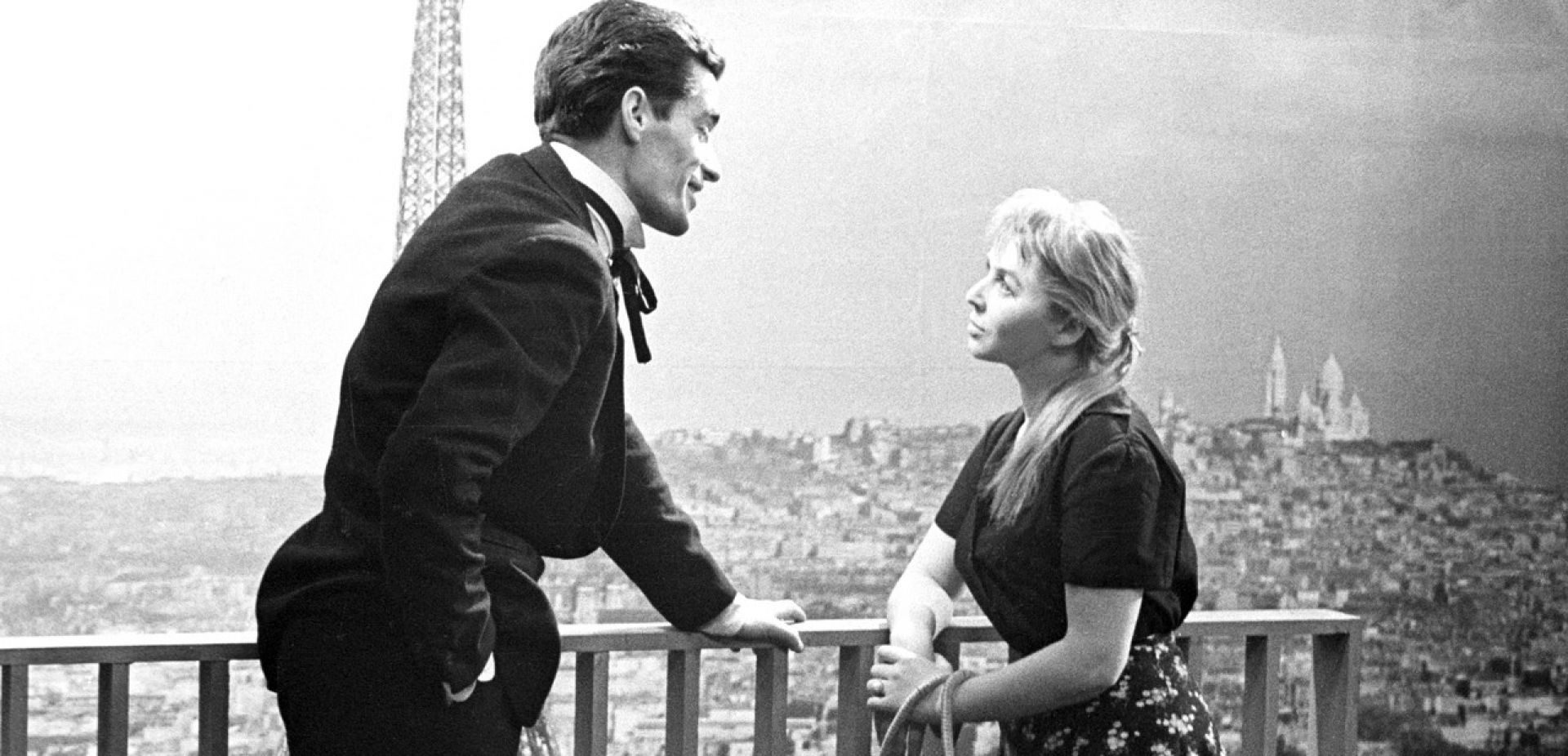
 SIGN UP TO OUR PAGE
SIGN UP TO OUR PAGE
 From its inception, television productions were a significant part of the programme and outstanding artists were offered work at the Television Theatre. One of the first to do so was Jan Marcin Szancer, who not only created the sets for the shows and directed, but was also the artistic director of TT. The Television Theatre's repertoire was overseen by a group of recognised artists such as Konrad Swinarski, Władysław Sheybal and Adam Hanuszkiewicz, as well as graduates of the Łódź Film School: Stanisław Loth, Janusz Kubik or Wojciech Siciński.
From its inception, television productions were a significant part of the programme and outstanding artists were offered work at the Television Theatre. One of the first to do so was Jan Marcin Szancer, who not only created the sets for the shows and directed, but was also the artistic director of TT. The Television Theatre's repertoire was overseen by a group of recognised artists such as Konrad Swinarski, Władysław Sheybal and Adam Hanuszkiewicz, as well as graduates of the Łódź Film School: Stanisław Loth, Janusz Kubik or Wojciech Siciński.